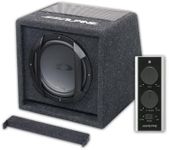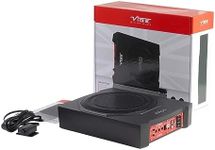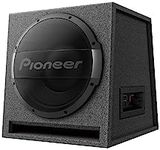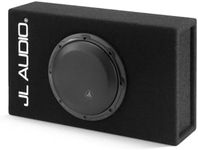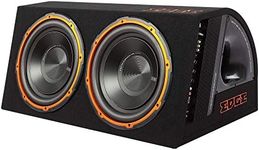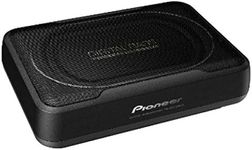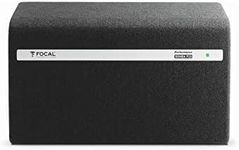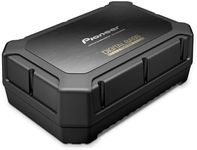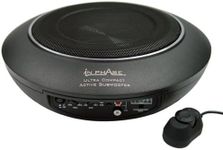Buying Guide for the Best Car Subwoofers
Choosing the right car subwoofer can significantly enhance your in-car audio experience by providing deep, rich bass that complements the rest of your sound system. When selecting a subwoofer, it's important to consider how it will fit into your vehicle, the type of music you enjoy, and how much power your audio system can handle. Understanding the key specifications will help you make an informed decision that aligns with your audio preferences and vehicle setup.SizeThe size of a subwoofer, typically measured in inches, affects the depth and power of the bass it can produce. Common sizes range from 8 to 15 inches. Smaller subwoofers (8-10 inches) are more compact and can fit in tighter spaces, making them suitable for smaller vehicles or for those who prefer a more balanced sound. Medium-sized subwoofers (12 inches) offer a good balance between size and bass output, ideal for most music genres. Larger subwoofers (15 inches) produce deeper bass and are great for bass-heavy music but require more space and power. Choose a size based on your vehicle's space and your bass preference.
Power HandlingPower handling refers to the amount of power a subwoofer can handle, measured in watts. It includes RMS (continuous power) and peak power (maximum power for short bursts). RMS is more important as it indicates how much power the subwoofer can handle consistently. Subwoofers with higher RMS ratings can produce louder and clearer bass. If you enjoy loud music or have a powerful amplifier, opt for a subwoofer with a higher RMS rating. For casual listening, a lower RMS rating may suffice.
SensitivitySensitivity measures how efficiently a subwoofer converts power into sound, expressed in decibels (dB). A higher sensitivity rating means the subwoofer requires less power to produce the same volume as a subwoofer with lower sensitivity. If you have a low-powered amplifier, a subwoofer with high sensitivity (above 90 dB) is ideal as it will produce more sound with less power. For high-powered systems, sensitivity is less of a concern, but higher sensitivity can still improve overall efficiency.
ImpedanceImpedance, measured in ohms, indicates the electrical resistance of the subwoofer. Common impedance ratings are 2, 4, and 8 ohms. Lower impedance subwoofers (2 ohms) can draw more power from the amplifier, potentially producing more sound, but they require a compatible amplifier. Higher impedance subwoofers (4 or 8 ohms) are more common and easier to match with most amplifiers. Choose an impedance that matches your amplifier's capabilities to ensure optimal performance.
Enclosure TypeThe enclosure type affects the sound quality and performance of the subwoofer. There are two main types: sealed and ported. Sealed enclosures provide tight, accurate bass and are suitable for all music types, especially if you prefer clarity over volume. Ported enclosures are larger and have openings that enhance bass output, making them ideal for bass-heavy music. Consider the type of music you listen to and the space available in your vehicle when choosing an enclosure type.




